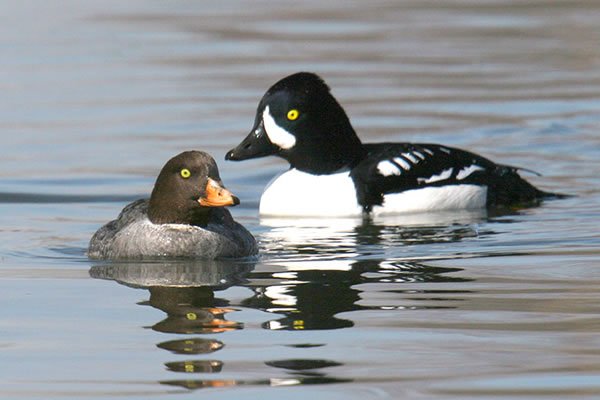Lead Institution(s): Environment and Climate Change Canada
Project Lead: Jean-Pierre Savard
Location: Atlantic Flyway
Focal Species: Barrow’s Goldeneye (Bucephala islandica)
Project Description: Concern over the status of the eastern population of Barrow’s Goldeneyes eventually led to the listing of this population as a Species of Special Concern by the Committee on the Status of Endangered Wildlife in Canada in the year 2000. Molting sites used by adult female Barrow’s Goldeneyes are still unknown and this is a crucial piece of information to insure full protection of the population, especially as it is estimated that there are less than 2000 adult females in the population. Determination of whether Common and Barrow’s Goldeneye females molt in the same areas may also have important implications in terms of hunting management. The main objective of this project was to locate molting areas of adult female Barrow’s Goldeneye for the eastern North American population using satellite telemetry.
SDJV119 Final Report FY09
Related Publications:
Jean-Pierre L. Savard, Michel Robert. 2013. Relationships among Breeding, Molting and Wintering Areas of Adult Female Barrow’s Goldeneyes (Bucephala islandica) in Eastern North America. Waterbirds 36: 34-42. https://doi.org/10.1675/063.036.0107
